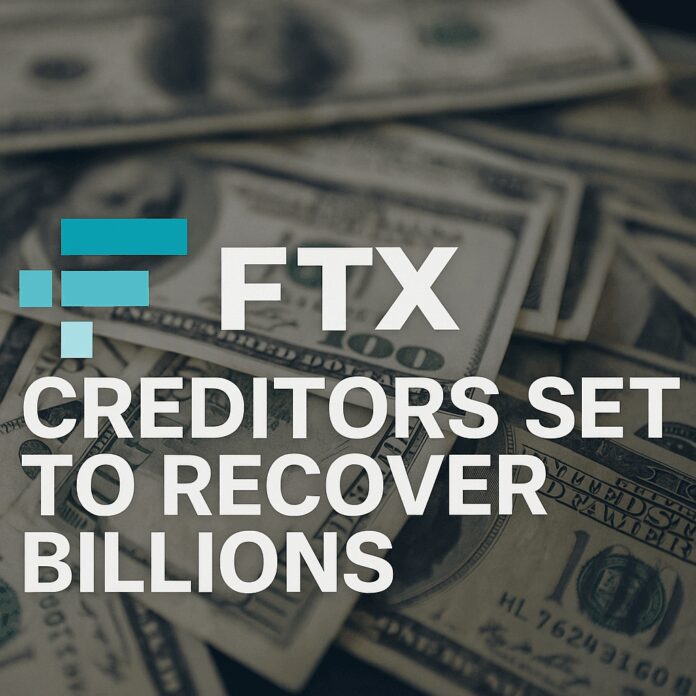With over $11 billion in allowed claims and only partial payouts for some regions, the FTX saga enters its final phase — and leaves key questions unresolved.
The update
As shared in a Binance post on July 7, 2025, the FTX bankruptcy estate has confirmed that over $11 billion in creditor claims are expected to be allowed. However, roughly $470 million of those may go unrecovered — blocked by jurisdictional restrictions and asset localization issues.
According to the report, the vast majority of customers will receive 100% repayment — in cash, a notable milestone in the wake of one of crypto’s most catastrophic collapses. But the fine print reveals continued complexity and inequality in who gets paid — and how.
Key points from the filing
- Total allowed claims: Estimated at $11.2 billion
- Expected recovery: ~100% for most non-subordinated creditors
- Jurisdictional losses: $470M potentially unrecoverable due to regulatory or enforcement barriers
- Payout method: Fiat currency, based on November 2022 claim valuation
- No crypto restitution: Users won’t get BTC, ETH, or altcoins back — only the USD value from time of collapse
Why it matters
FTX’s collapse in 2022 was a watershed moment in crypto — a $32 billion empire revealed to be riddled with fraud, mismanagement, and regulatory evasion. The repayment of creditors is a historic financial event, but it also marks the end of an era of unregulated exchange dominance.
This payout plan may help restore some retail and institutional trust, but the decision to repay in cash (rather than crypto) has sparked debate — especially among users whose holdings have since risen in value.
Critical reflections
1. 100% — but what kind of 100%?
Creditor recovery is being calculated based on the value of assets in November 2022, when FTX filed for bankruptcy. A user with 1 BTC worth ~$16,000 at that time will receive $16,000 in cash — not the current ~$60,000 market value of Bitcoin in July 2025.
This results in massive opportunity loss, and while it aligns with U.S. bankruptcy norms, it feels inadequate to those who expected like-kind restitution in the form of digital assets.
2. Jurisdictional inequality persists
An estimated $470 million in claims may remain unpaid, largely due to legal restrictions, frozen funds in opaque jurisdictions, or hostile regulatory regimes. This means creditors in certain regions (e.g., sanctioned nations, or countries with enforcement barriers) may never recover anything — even if their claims are technically valid.
The FTX estate has noted that it cannot override local laws or asset controls, meaning geography still determines who wins or loses.
3. What precedent does this set?
The FTX case may become the new model for large-scale crypto bankruptcies:
- USD-based valuation
- Prioritization of fiat over tokens
- Legal jurisdiction determining actual payout
This could create long-term trust issues for crypto exchanges — especially if users fear that they won’t recover their crypto in the event of a failure, even if the platform survives financially.
Broader context
This update follows several similar high-profile crypto bankruptcies:
- Celsius Network has begun asset liquidation to repay creditors — with similar fiat-based payouts
- BlockFi creditors face continued delays, with most recovery tied to FTX’s payout
- Mt. Gox creditors are still waiting — 10+ years later
In this sense, FTX’s rapid (and relatively full) repayment process is an outlier — not the new norm.
Final thoughts
While many are calling this “justice served,” it’s more complicated. The FTX creditor recovery plan is technically generous — but emotionally and financially unsatisfying for users who were forced into liquidation and missed the crypto bull run.
FTX’s collapse may be nearing its legal conclusion, but the reputational scars remain — and so does the question:
In crypto, is “getting your money back” really enough?




